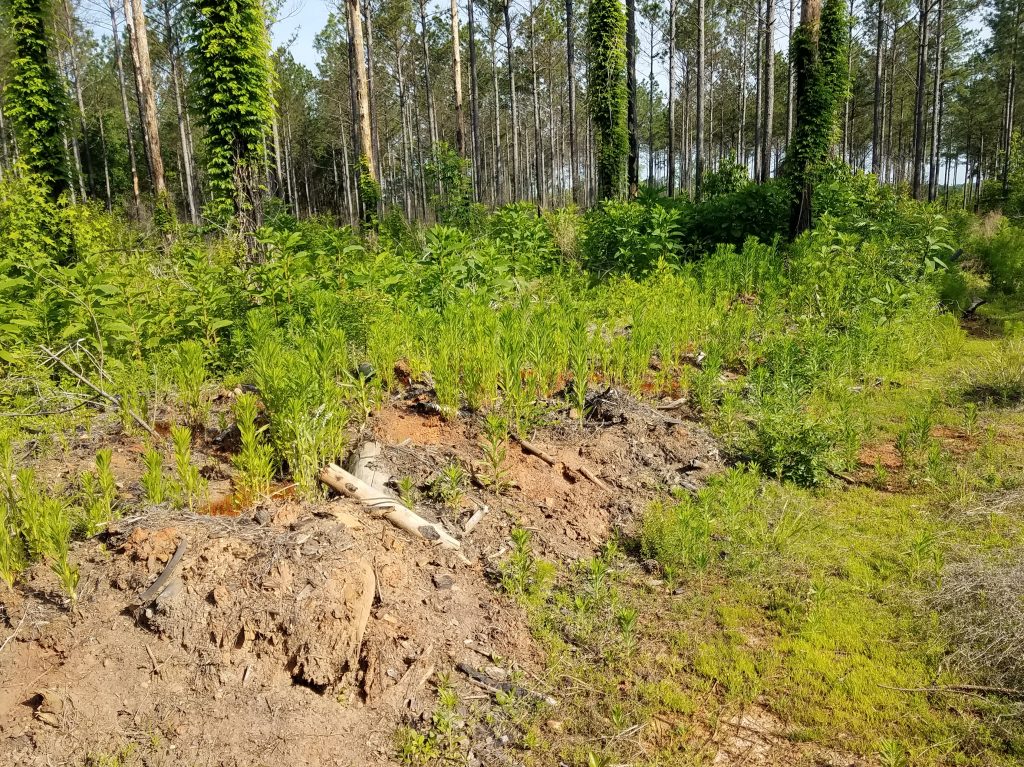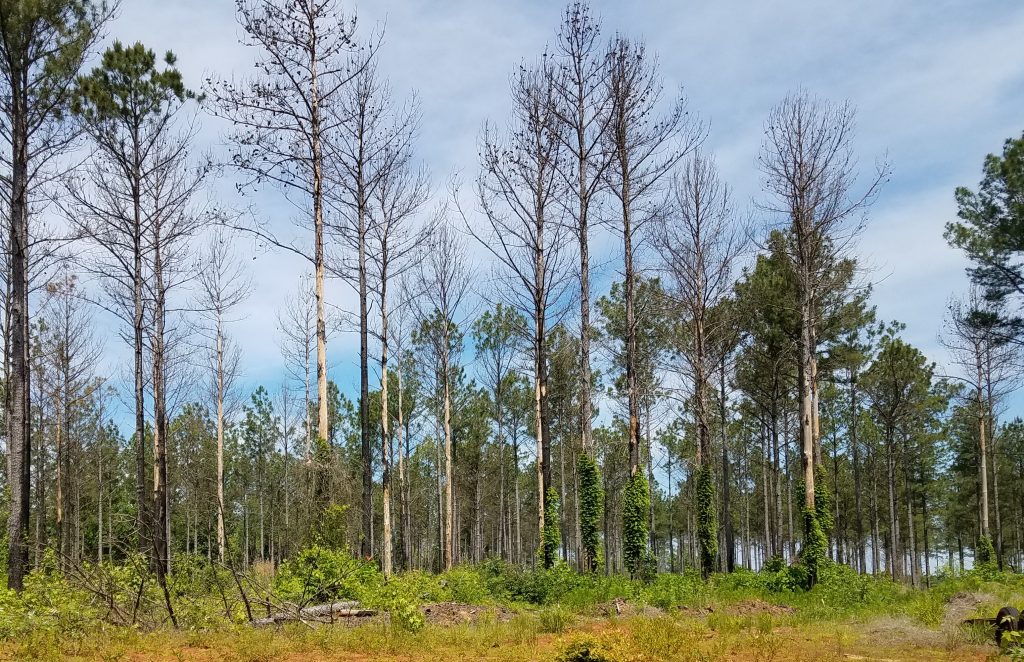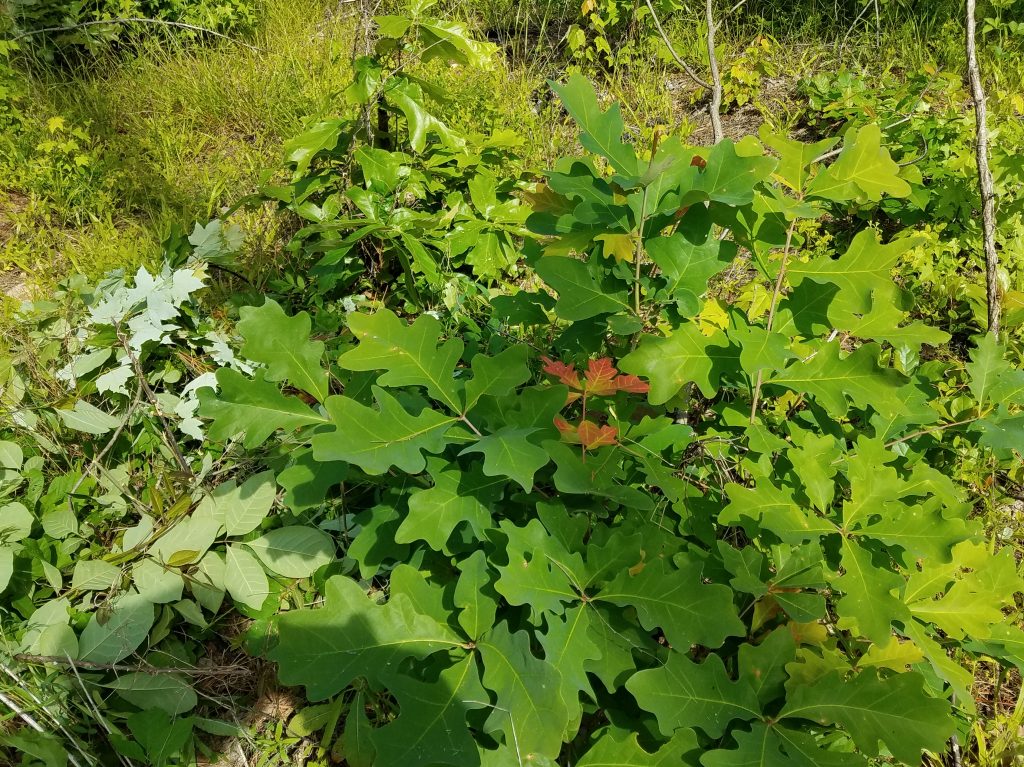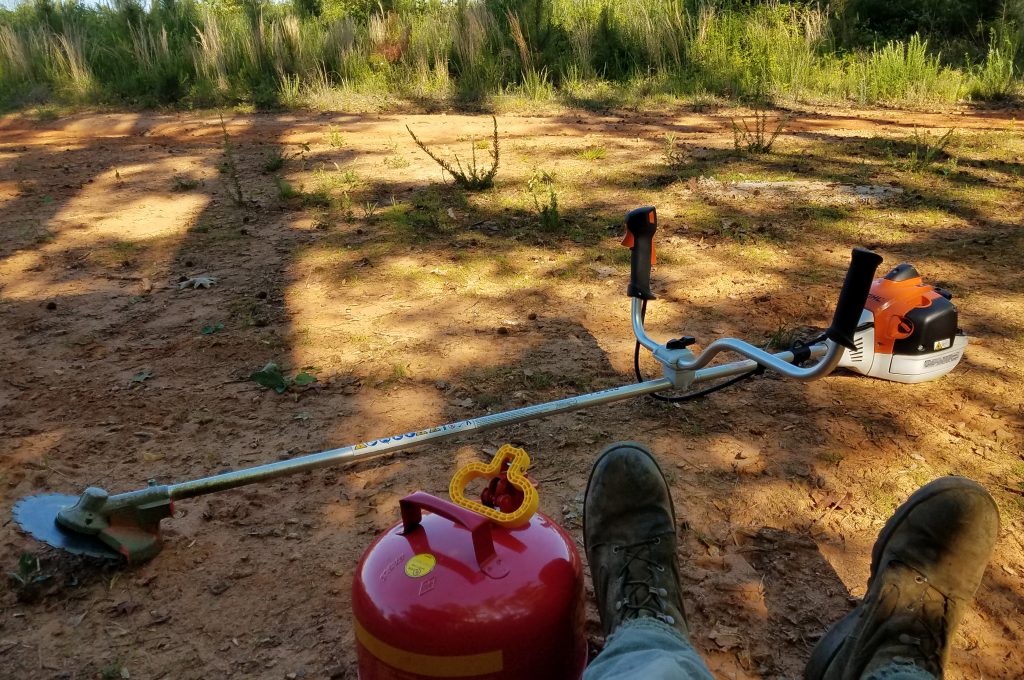
As a gentleman landowner, I am unaccustomed to actual work. Today was a lot of actual work in the forest.
I had some success and some not success. I cleared a couple acres of sweet gum and poplar in order to give oaks a better chance. This took two tanks of gas on my machine, i.e. a little over three hours of cutting and another hours of pilings and pulling. I think it will work.
Next I went after the gum and popular in my 2016 pine plantation. Here I ran into Japanese honeysuckle. This is a beautiful plants with a wonderful fragrance. It is also a horrible invasive. It can overwhelm, cover and kill small trees.My machine did not work well against them – too many stems, too close the ground and the vines move when you cut at them. I worked hard but accomplished little of value.
The only viable option is chemical warfare. I am going to have to spray them or maybe get someone to do it for me with a helicopter. I have around 30 acres of this 2016 pine. Not all is inundated with honeysuckle, but a lot of it is. I am not sure I can take it all on with my backpack sprayer. Actually, I am sure that I cannot. I will need to call in air support.
Also checked out the burning. The winter burn is looking good. I don’t think we lost any pines. We will need to burn a couple more times to establish a nice grass and forbs layer.
The burn from May of last year killed a couple dozen trees. It got too hot. I was very depressed when I saw it, but now with the passage of time it has become a kind of science project. I planted some longleaf under the dead trees and I am using this as one of my oak regeneration experiments.
Biochar is one of the parts of the science experiment. I have long been interested in “terra preta” in the Amazon. This is anthropogenic soil created by the natives by mixing charcoal with soil. It holds water better and produces a lot more plant life. We created some terra preta by accident. When the fire looked like it might escape, DoF pushed a line and trapped lots of wood in with dirt. It burned slowly and turned to charcoal and dirt, i.e. biochar. I will watch how it does.
My first picture shows the honeysuckle. Next shows the dead trees from the May burning, follow by the biochar heap. Picture # 4 shows the winter fire result – live trees and quick recovery. Maybe too quick. It did not burn enough. Last is some of my oak preference. I knocked down the gum, red maple, popular and sycamore anywhere near an oak. All the time I was working out there today, I was thinking of the Aldo Leopold essay “Axe in Hand.” –
“When some remote ancestor of ours invented the shovel, he became a giver; he could plant a tree. And when the axe was invented, he became a taker; he could chop it down. Whoever owns land has thus assumed, whether he knows it or not, the divine functions of creating and destroying plants.”






